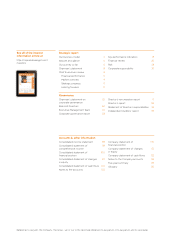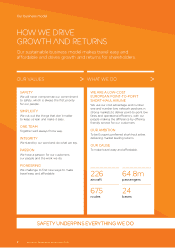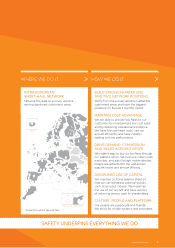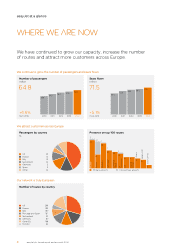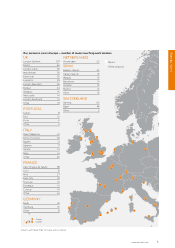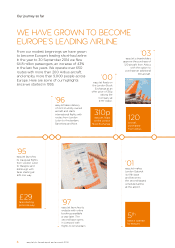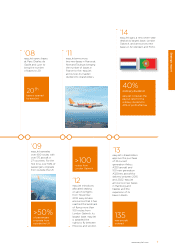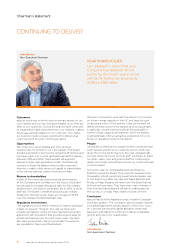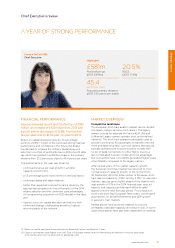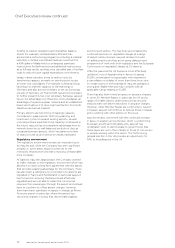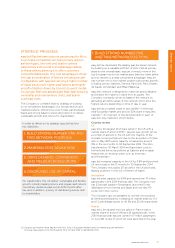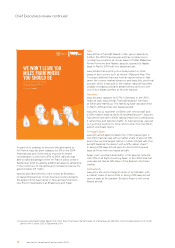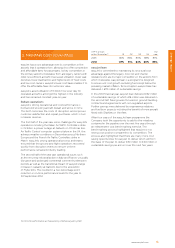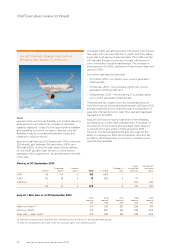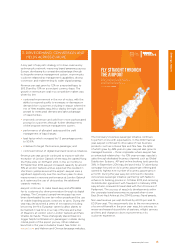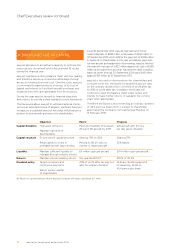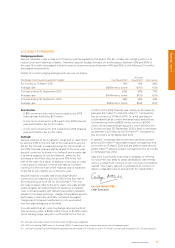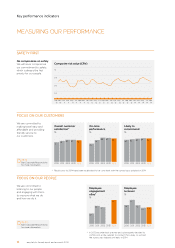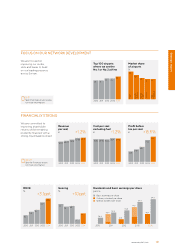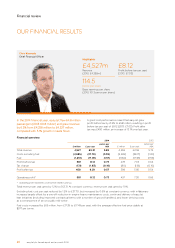EasyJet 2014 Annual Report Download - page 12
Download and view the complete annual report
Please find page 12 of the 2014 EasyJet annual report below. You can navigate through the pages in the report by either clicking on the pages listed below, or by using the keyword search tool below to find specific information within the annual report.10 easyJet plc Annual report and accounts 2014
Chief Executive’s review continued
point-to-point airlines. This has been accompanied by
continued pressure on regulated charges at a range
of airports across Europe. easyJet remains focused
on addressing this and has an on-going dialogue and
programme of work with both regulators and the European
Commission on regulated charges at EU airports.
After the year-end the UK Supreme Court effectively
upheld a Court of Appeal ruling in favour of paying
EU261 compensation to passengers who experience
a cancellation or a delay of more than three hours due
to certain types of technical failure. easyJet operates a
young and reliable fleet and fully complies with all
applicable rulings relating to EU261.
There has also been mixed progress on airspace charges.
In some EU Member States, in particular the UK and a
range of smaller nations, airline pressure has ensured
that providers will deliver reductions in airspace charges.
However, other Member States are continuing to support
increases. easyJet will continue to oppose these increases,
and is working with other airlines on this issue.
easyJet remains concerned with the continued increase
in taxes on aviation across Europe, which is undermining
European growth and ultimately jobs. easyJet has
undertaken work to demonstrate to governments that
these taxes are not in their interest or those of consumers
or people working within the sector. The forthcoming
general election in the UK provides an opportunity for
APD to be addressed in the UK.
funding to support operations and strengthen balance
sheets. For example, UK-based airline Monarch has
announced a restructuring programme including a material
reduction in its fleet size. Etihad made an investment for
a 49% stake in Alitalia which is undergoing significant
restructuring. Air Berlin announced additional restructuring
at its full year results, and has since cancelled part of its fleet
order to reduce future capital expenditure commitments.
Legacy carriers are also trying to reduce costs by
transferring capacity, primarily on point-to-point routes,
to lower-cost subsidiaries. For example, Lufthansa Group
has begun to transfer capacity to Germanwings in
Germany and also announced plans to set up Eurowings
outside of Germany. Air France-KLM has announced plans
to further expand its low-cost subsidiary Transavia. easyJet
has a cost advantage over these low-cost subsidiaries, an
advantage of a pan-European network and an established
brand which allows it to drive high load factors from both
departure and arrival markets.
Primary airports are becoming increasingly capacity
constrained in peak periods. With long planning and
investment cycles to expand existing airports, several
more airports are expected to be capacity-constrained in
the future. easyJet has a competitive advantage from its
network driven by its well-balanced portfolio of slots at
congested primary airports, which has taken a number
of years to build up and cannot be readily replicated.
Regulatory environment
The regulatory environment remains an important issue
for easyJet and, while the Company has seen significant
progress in some areas, easyJet continues to see
monopoly infrastructure providers imposing unreasonable
price increases.
At Gatwick, easyJet’s largest base, the Company worked
to make changes to the regulatory environment which has
allowed it to reach a long-term agreement with the airport
that provides a lasting advantage for the Company. There
has also been a willingness to reconsider how airports are
regulated in France and Switzerland; in particular easyJet
has focused on ensuring that airports are effectively
regulated and are not able to retain the commercial
revenues from passengers through the airport and instead
have to use them to offset airport charges. However,
there have been significant increases in charges at Rome
Fiumicino airport in particular, where the airport has
structured charges in a way that discriminates against


